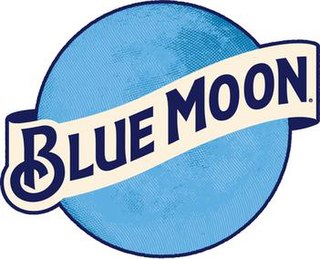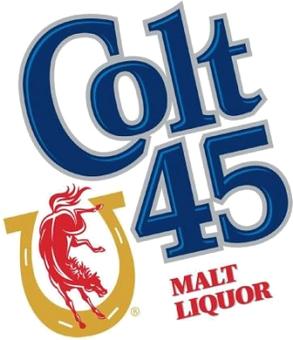Ice beer is a beer that has undergone some degree of freezing during production. These beers generally have a higher alcohol content, and lower price relative to it.

Low-alcohol beer is beer with little or no alcohol by volume that aims to reproduce the taste of beer while eliminating or reducing the inebriating effect, carbohydrates, and calories of regular alcoholic brews. Low-alcohol beers can come in different beer styles such as lagers, stouts, and ales. Low-alcohol beer is also known as light beer, non-alcoholic beer, small beer, small ale, or near-beer.

Joseph Schlitz Brewing Company is an American brewery based in Milwaukee, Wisconsin, and was once the largest producer of beer in the United States. Its namesake beer, Schlitz, was known as "The beer that made Milwaukee famous" and was advertised with the slogan "When you're out of Schlitz, you're out of beer". Schlitz first became the largest beer producer in the US in 1902 and enjoyed that status at several points during the first half of the 20th century, exchanging the title with Anheuser-Busch multiple times during the 1950s.
The Stroh Brewery Company was a beer brewery in Detroit, Michigan. In addition to its own Stroh's brand, the company produced or bought the rights to several other brands including Goebel, Schaefer, Schlitz, Augsburger, Erlanger, Old Style, Lone Star, Old Milwaukee, Red River, and Signature, as well as manufacturing Stroh's Ice Cream. The company was taken over and broken up in 2000, but some of its brands continued to be made by the new owners. The Stroh's brand is currently owned and marketed by Pabst Brewing Company, except in Canada where the Stroh brands are owned by Sleeman Breweries.

Beer was introduced to Canada by European settlers in the seventeenth century. The first commercial brewery was La Brasseries du Roy started by New France Intendant Jean Talon, in Québec City in 1668. Many commercial brewers thrived until prohibition in Canada. The provincial and federal governments' attempt to eliminate "intoxicating" beverages led to the closing of nearly three quarters of breweries between 1878 and 1928. It was only in the second half of the twentieth century that a significant number of new breweries opened up. The Canadian beer industry now plays an important role in Canadian identity, although globalization of the brewing industry has seen the major players in Canada acquired by or merged with foreign companies, notably its three largest beer producers: Labatt, Molson and Sleeman. The result is that Moosehead, with an estimated 3.8 percent share of the domestic market in 2016, has become the largest fully Canadian-owned brewer.

The Pabst Brewing Company is an American company that dates its origins to a brewing company founded in 1844 by Jacob Best and was, by 1889, named after Frederick Pabst. It is currently a holding company which contracts the brewing of over two dozen brands of beer and malt liquor: these include its own flagship Pabst Blue Ribbon, as well as brands from many now-defunct breweries.

Olde English 800 is a brand of American malt liquor brewed by the Miller Brewing Company. It was introduced in 1964, and has been produced by the company since 1999. It is available in a variety of serving sizes including, since the late 1980s, a 40-U.S.-fluid-ounce (1,200-milliliter) bottle.

Steel Reserve, also known as 211, is an American lager brand owned and produced by Steel Brewing Company, which is owned by Miller, a subsidiary of Molson Coors. The drink comes in "Black" and "Silver" varieties, also known as "Triple Export Malt Liquor" and "High Gravity Lager", respectively. It has a high alcohol content. It was introduced in 1994.

In the United States, beer are manufactured in breweries which range in size from industry giants to brew pubs and microbreweries. The United States produced 196 million barrels (23.0 GL) of beer in 2012, and consumes roughly 28 US gallons (110 L) of beer per capita annually. In 2011, the United States was ranked fifteenth in the world in per capita consumption, while total consumption was second only to China.

Old Milwaukee is a brand of American dry lager owned by the Pabst Brewing Company. The brand currently consists of three different brews: Old Milwaukee Lager, Old Milwaukee Light, and Old Milwaukee Non-Alcoholic. Old Milwaukee is brewed throughout the United States and various packages are currently distributed in all 50 U.S. states, many Canadian provinces, and in select international markets.

Genesee Brewing Company is an American brewery located along the Genesee River in Rochester, New York. From 2000 to 2009, the company was known as the High Falls Brewing Company. In 2009, High Falls was acquired by the capital investment firm KPS Capital. Together with newly acquired Labatt USA, KPS merged the two companies as North American Breweries. Along with this change, High Falls Brewery changed its name back to the original "Genesee Brewing Company" operating under the North American Breweries name. In October 2012, North American Breweries was purchased by FIFCO.

Blue Moon Belgian White is a Belgian-style witbier brewed by Molson Coors under the name the Blue Moon Brewing Co. It was launched in 1995, and was originally brewed in Golden, Colorado.

Colt 45 is an American brand of lager or malt liquor made and primarily marketed in the United States and Canada, originally introduced by National Brewing Company in the spring of 1963. Through a series of mergers and acquisitions, the National Brewing Company and its brands are today owned by the Pabst Brewing Company.

Oriental Brewery or OB is a South Korean brewery currently owned by AB InBev, and initially founded by Doosan Group.

The G. Heileman Brewing Company of La Crosse, Wisconsin, United States, was a brewer that operated from 1858 to 1996. It was ultimately acquired by Stroh's. From 1872 until its acquisition, the brewery bore the family name of its co-founder and brewer Gottlieb Heileman.

Birra Moretti is an Italian brewing company, founded in Udine in 1859 by Luigi Moretti. In 1996 the company was acquired by Heineken N.V. The brewing plant in Udine was sold to the newly formed Birra Castello S.p.A., and the beer is now also brewed in different locations including in Manchester, United Kingdom. Moretti is now a brand of Heineken.

The alcohol laws of Pennsylvania contain many peculiarities not found in other states, and are considered some of the strictest regulations in the United States.
Anheuser-Busch, a wholly owned subsidiary of Anheuser-Busch InBev SA/NV, is the largest brewing company in the United States, with a market share of 45 percent in 2016.
A malt drink is a fermented drink in which the primary ingredient is the grain, or seed, of the barley plant, which has been allowed to sprout slightly in a traditional way called "malting" before it is processed.















